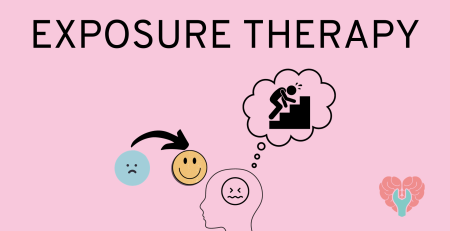Narrative Therapy – Firstly many have gradually accepted and normalised therapy, especially among the younger generations. We are in an era where we have started to understand the importance of mental health and well-being. There are growing mental health service providers that accommodate various mental health concerns, promoting personal growth and healing. We are now education ourselves on therapy and what we can expect from a therapy session. However, there is also a growing concern about the type of therapy that the clients prefer. Many clients request Cognitive Behavioral Therapy (CBT) as many internet feeds suggest CBT as one of the primary therapy approaches for treating mental health concerns. Thus, we have also noticed clients specifically requesting therapists who practice CBT as their main therapy approach.
Is CBT the only most effective therapy approach? The answer is NO. Although CBT is known for its effectiveness, many other approaches also work the best for clients, such as Gestalt Therapy, Narrative Therapy, Person Centered Therapy, and many more. In this article, let us dive deeper into Narrative Therapy and how it assists in one’s healing.
Narrative Therapy is a form of therapy that separates an individual from his/her issues by focusing on the narratives that they construct about their lives. It allows one to externalize their concerns rather than internalizing them. The principle that lies within this approach is that our personal stories will mould our perceptions, behaviours, and experiences. Through reframing one’s life narratives with the assistance of a professional therapist, one can gradually guide through life challenges, creating more empowering and positive narratives.

The following will be the key techniques and flow utilized in Narrative Therapy:
1.0 The Narrative Perspective:
The clients are the storytellers in Narrative Therapy. This is simply because one views their life experiences by constructing narratives about themselves, the people around them and their lives. These narratives often can influence and have a huge impact on one’s emotions, behaviours, beliefs, values, and many more.
Example: Therapists assist one to put their narrative together by allowing them to express their emotions, thoughts, and meanings placed behind their narratives. Then the client would become the observer of their story and review with the therapist once the story comes together.
2.0 Externalization:
In Narrative Therapy, problems or issues would be separate from the individual, meaning they would be externalized. This technique assists one to distance themselves from their issues and view them from a distance perception. This leads towards a decline in shame or self-blaming. Moreover, it also allows one to have a more objective standpoint of exploration and acknowledgement of their issues, rather than constantly influenced by the emotions that their narratives create. It also allows one to view the problem as a problem, not themselves as the problem.
Example: Instead of narrating as “I am depressed”, therapists would assist clients to separate their issues from them by having a shift in their choice of words, such as “I am experiencing depression”.
3.0 Deconstruction of Dominant Narratives:
Generally, cultural or societal expectations and pressures, stereotypes, and many more often influence how one perceives and narrates themselves. Through Narrative Therapy, one deconstructs the narrative that may be limiting or oppressing them from achieving their authentic self. Therefore, a therapist would work with one to break down their narratives into more manageable, smaller parts to clarify the issue. This helps to make the issues more specific with over-generalization.
Example: While deconstructing narratives, therapists often utilize diagrams or other narrative visualizations that represent various subplots and narratives of one’s life. This assists them in gaining clarity on how their stories influence them.
4.0 Re-Authoring Stories:
Upon deconstructing the dominating narrative, one would be re-authoring their life stories in Narrative Therapy. One often gets stuck in their well-established problematic narrative, making them unable to view the alternative versions of the narrative. Along with the assistance of a therapist, one would explore, identify, and rewrite the narratives that may be leading to their distress or holding them stagnant from moving forward. This technique allows one to hold an active role in moulding their preferred narratives on their life or specific life events.
Example: Symbolic rituals or techniques are often utilized in Narrative Therapy to embrace the transition from old, limiting narratives to new, fostering ones. These techniques include journaling, having meaningful conversations with old self, arts, music, etc.
5.0 Unique Outcomes:
In Narrative Therapy, therapists assist one in identifying and embracing their “unique outcomes” or instances in their lives. These instances are where they have acted in ways that were consistent with their preferred narratives (re-authored narratives). These instances would further serve as evidence of the individual’s resilience and strength in pushing through life. It also serves as a guide for future actions. These unique outcomes would contradict the issues and allow one to build self-esteem to heal. This leads towards revealing one’s true authentic self.

In short, Narrative Therapy can be a transformative and efficient approach to healing and working on mental health concerns. Narrative Therapy assists one in recognizing the impact of stories we tell ourselves. This approach also assists with re-authoring to dissociate ourselves from the issues we face. It also makes therapy more exciting as it embarks one’s imagination and creativity while working on their narratives. By learning to externalize issues, one can regain control over their life and unlock their authenticity. Narrative Therapy emphasizes that we are the authors of our own stories. We can rewrite and remould our narratives to create more meaningful and fulfilling lives.

“ The day we recognize the invisible magical pen in our pockets, we will be the greatest story writers of our destiny.”.
Another interesting approach in therapy will be Acceptance and Commitment Therapy (ACT), you can read more about it here.
For more content related to mental health do follow us on our official Instagram.





发表回复